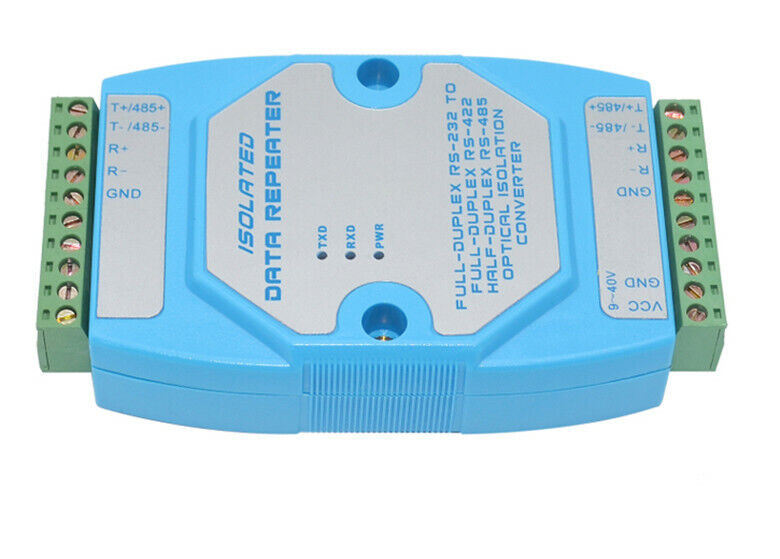
What You Need to Know About RS-485 in Industrial Automation
Introduction: Industrial Communication Starts Here
In industrial automation, reliable communication between devices is the backbone of efficient control systems. One of the most widely used standards for long distance, noise-resistant, and multi-device communication is RS-485. Commonly used in factory floors, HVAC systems, motor controls, and industrial sensors, RS-485’s robust design makes it ideal for harsh environments where standard protocols like RS-232 fall short.
What is RS-485?
RS-485 (also known as EIA-485 or TIA-485-A) is a differential serial communication standard that defines the electrical characteristics of drivers and receivers used in multi-point systems. Developed by the EIA (Electronic Industries Alliance) and TIA (Telecommunications Industry Association), it’s designed for balanced transmission using twisted-pair cables to eliminate electromagnetic interference (EMI).
Key Features:
-
Supports multi-point networks (up to 32 receivers per bus)
-
Cable length up to 1200 meters (4000 ft)
-
Half-duplex and full-duplex modes
-
Resistant to electrical noise and signal degradation
-
Works well in industrial, automotive, and HVAC systems
RS-485 Technical Specifications
| Parameter | Specification |
|---|---|
| Communication Mode | Half-Duplex (or Full-Duplex with 2 pairs) |
| Max Cable Length | 1200 meters (4000 ft) |
| Max Data Rate | 10 Mbps at 12 meters, 100 kbps at 1200 meters |
| Receiver Input Sensitivity | ±200 mV |
| Receiver Input Voltage Range | −7V to +12V |
| Driver Output Voltage Range | ±1.5V to ±5V |
| Max Load Capacity | 32 unit loads (375Ω total load) |
| Driver Short-Circuit Current | 250 mA |
Why RS-485 Excels in Industrial Settings
-
Differential Signaling: Cancels out electrical noise using two inverse signal lines (A and B).
-
Twisted-Pair Cables: Prevent EMI and allow for long-distance communication.
-
Robust Electrical Properties: Wide voltage tolerances and fault resistance.
-
Multi-Drop Capability: Connect multiple devices to a single communication line.
How RS-485 Works
Half-Duplex Mode:
Uses one twisted-pair cable to send and receive data, but only one direction at a time. Ideal for systems where only one device speaks at a time ( Modbus RTU).
Full-Duplex Mode:
Uses two twisted-pair cables (4 wires total) to allow simultaneous transmission and reception. Useful in systems where continuous bidirectional data flow is needed, though it’s typically limited to master-slave setups.
RS-485 in Real-World Industrial Applications
Common Use Cases:
-
Factory automation (CNCs, PLCs, robotic arms)
-
Process control in chemical, paper, and food processing plants
-
Building automation and HVAC control systems
-
Security and access control
-
SCADA systems
RS-485 in Modbus and Profibus Protocols
Modbus RS-485
Modbus is a widely adopted client-server (master-slave) protocol used in industrial networks. RS-485 provides the physical layer for Modbus RTU (Remote Terminal Unit), enabling:
-
Connection of up to 127 slave devices per master
-
Long-distance communication with minimal interference
-
High-speed querying and control using a single twisted-pair cable
Profibus (Process Field Bus)
Profibus also uses RS-485 at its physical layer, supporting:
-
Bi-directional, token-passing communication
-
Multi-master capabilities
-
Integration of sensors, actuators, and PLCs in complex process environments
-
Up to 32 nodes per segment, expandable via repeaters
Factors That Affect RS-485 Data Rates
Several technical factors influence how fast you can transmit data over RS-485:
| Factor | Impact on Data Rate |
|---|---|
| Cable Length | Longer cables reduce max data rate |
| Cable Quality | Shielding and twisted-pair construction reduce noise |
| Receiver Input Impedance | Affects how many devices can be connected in parallel |
| Termination | Proper termination prevents signal reflection |
| Driver Slew Rate | Faster edges = higher speed but more noise |
| Noise Margin | Higher margins ensure data integrity |
Pro Tip: Use shielded Cat5e or Cat6 twisted-pair cables and terminate lines correctly to ensure optimal performance.
Best Practices for RS-485 Networks
-
Always terminate both ends of a long cable with a resistor equal to cable impedance (~120Ω)
-
Use differential transceivers designed for industrial applications
-
Place bias resistors to keep the line idle high
-
Avoid daisy-chaining power to RS-485 nodes to minimize ground loops
Conclusion
RS-485 remains a cornerstone communication standard in industrial automation, offering exceptional noise immunity, support for long-distance data transmission, and the ability to network multiple devices efficiently. When paired with protocols like Modbus and Profibus, it becomes the backbone of scalable, robust, and efficient automation systems.
If you're designing, upgrading, or troubleshooting an industrial control system, understanding and correctly implementing RS-485 can save time, money, and prevent costly downtime.
Need RS-485 Capable Equipment or Support?
Contact PLG Automation for guidance on RS-485 compatible PLCs, sensors, interface modules, and network accessories.
📧 Email: sales@plgautomation.com
📞 Phone: 800-906-9271
